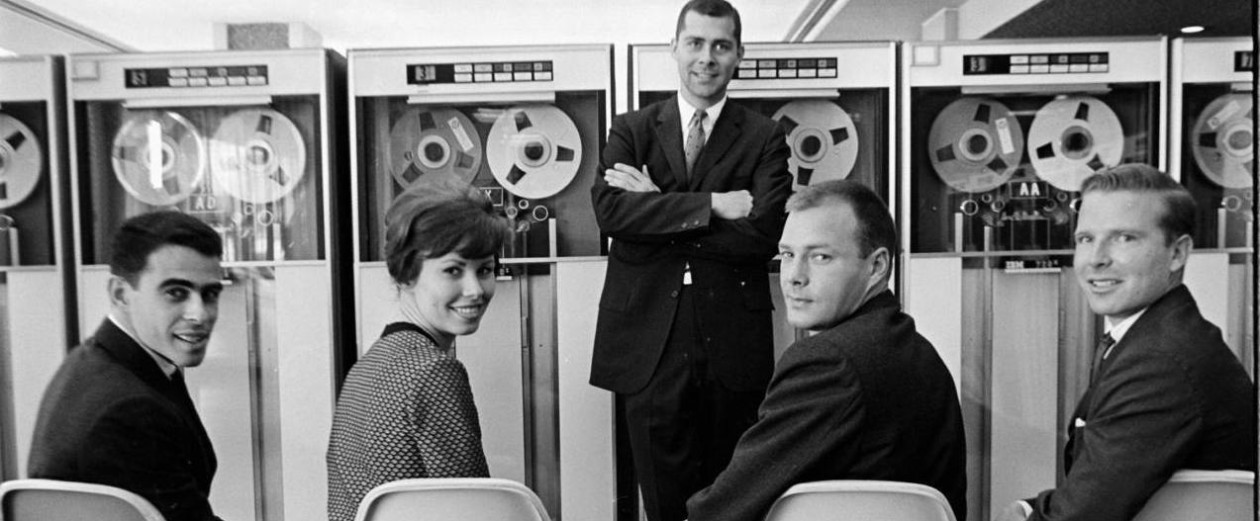At long last my article “Beards, Sandals, and Other Signs of Rugged Individualism”: Masculine Culture within the Computing Professions has been published in Osiris, the annual journal of the History of Science Society. This piece has been a long time coming: the original workshop it was commissioned for was held in 2012, and the extensive process of peer review that makes Osiris issues so special stretched out over the past two years.
The focus of the special issue is on “scientific masculinities,” and my article explores the flip-side of the work I have been doing on the history of women in computing. That is to say, my emphasis is on how male programmers constructed both a professional and a masculine identity for themselves.
From the abstract of the article:
Over the course of the 1960s and 1970s, male computer experts were able to successfully transform the “routine and mechanical” (and therefore feminized) activity of computer programming into a highly valued, well-paying, and professionally respectable discipline. They did so by constructing for themselves a distinctively masculine identity in which individual artistic genius, personal eccentricity, antiauthoritarian behavior, and a characteristic “dislike of activities involving human interaction” were mobilized as sources of personal and professional authority. This article explores the history of masculine culture and practices in computer programming, with a particular focus on the role of university computer centers as key sites of cultural formation and dissemination.
The title of the article comes from a contemporary essay by Richard Brandon called “The Problem in Perspective” (the problem here being the pervasive “question of professionalism” in the computer industry, which is the subject of my first published academic article). The “programmer type,” according to Brandon, was “excessively independent,” often to the point of mild paranoia. He was “often egocentric, slightly neurotic, and he borders upon a limited schizophrenia. The incidence of beards, sandals, and other symptoms of rugged individualism or nonconformity are notably greater among this demographic group.” Tales about programmers and their peculiarities “are legion,” Brandon argued, and “do not bear repeating here.”1 Richard Brandon, “The problem in perspective,” in Proceedings of the 1968 23rd ACM National Conference (New York, 1968): 332–334.
Having just given a talk at the SXSW interactive festival, I can attest (anecdotally, at least) that beards are alive and well in programming culture. And according to this research by the folks at Trestle Technology, which combines Github data with Microsoft facial recognition software, Swift developers are “beardy hipsters.”
Shortly after the publication of the new article, a friend discovered an extended quote from Brandon that also claimed the “two of the hippie leaders at Haight-Ashbury were computer programmers.” It took me some time to track this claim down, but I finally found it in a chapter on “The Economics of Computer Programming” that Brandon published in a 1970 book On the Management of Computer Programmers.[2. George Weinwurm, editor. On the Management of Computer Programmers (New York, Auerbach Publishers, 1970).
The association between computer culture and the counter culture has been much discussed (most sensibly and thoroughly by Fred Turner in his masterful From Counter-Culture to Cyberculture). This quote by Brandon is an early and atypical reference to hippies and hackers, and my thanks to Dag Spicer at the Computer History Museum for bringing it to my attention.
- 1Richard Brandon, “The problem in perspective,” in Proceedings of the 1968 23rd ACM National Conference (New York, 1968): 332–334.

 Follow
Follow
3 thoughts on “Beards, Sandals, and Programmers”